
All categories
Featured selections
Trade Assurance
Buyer Central
Help Center
Get the app
Become a supplier

(5142 products available)

















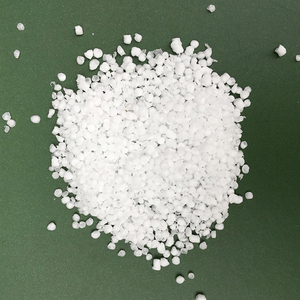
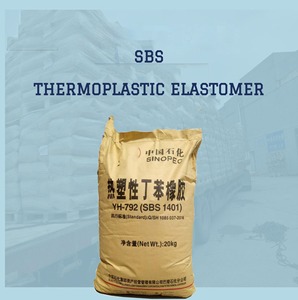


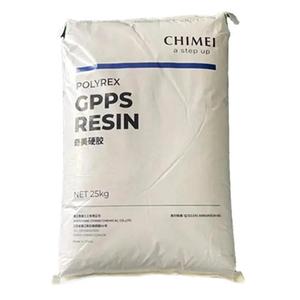








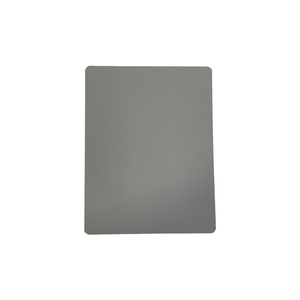
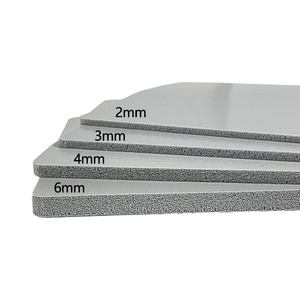
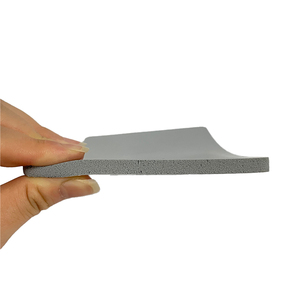


















Mostly known as styrene-acrylonitrile copolymer, styrene copolymer is a thermoplastic synthesized through the polymerization of styrene and nitrile. A synthetic resin group, styrene copolymers are majorly used in the production of plastics. Primarily, the styrene is meant to provide rigidity and clarity, while the copolymer acts as a plasticizer, improving the materials' flexibility and impact resistance.
Polystyrene is another common type of styrene copolymer. In this type, the structure consists of long chains of unbranched styrene monomers. Typically, this leads to a rigid, transparent material. On the other side of the spectrum, acrylonitrile-butadiene-styrene copolymer contains repeating units of styrene and acrylonitrile with butadiene inserted in the structure. Usually, this structure enhancement causes the improvement of the materials' toughness and chemical resistance.
The synthetic resin group of styrene copolymers can also include styrene-acrylate copolymers. Conventionally, these are synthesized through the copolymerization of styrene and acrylic acids or their esters. Normally, this incorporation enhances UV resistance and adhesion properties. Such features make the styrene-acrylate copolymers ideal candidates for paint, adhesives, and sealants.
Styrene-maleic anhydride copolymer is another common type. Ideally, this type is synthesized through the copolymerization of styrene and maleic anhydride. Sadly, there is limited information about this type as less is known about its applications and properties. Nonetheless, its regulation of water solubility has proven useful in its application in coatings and other performance products.
Usually, styrene copolymers' most common application is in the production of ABS plastic. For example, the electronics industry uses these to make casings, components, and other parts due to their durability and aesthetic appeal. In addition, the automotive industry uses styrene copolymer to manufacture interior panels, car trims, and assemblies. Generally, the materials' impact resistance and ease of molding make them ideal for such applications.
In the construction industry, styrene copolymers are incorporated into paints, sealants, and adhesives. This is especially common with styrene-acrylate copolymers, which are identifiable with their excellent adhesion properties and UV resistance capabilities. Therefore, these properties find them suitable for outdoor applications where longevity and weather resistance are critical.
Also, styrene copolymers are used for manufacturing insulating foams for building thermal efficiency. Usually, these foams hold heat during cold seasons and minimize heat during hot seasons, thus reducing the energy costs in the long run.
For the adhesives and sealants, styrene copolymers are also responsible for enhancing their elasticity and bond strength. Sadly, this makes them ideal use in various applications, including construction, automotive assembly, and general manufacturing. Moreover, the power of these copolymers to blend with other resins enables their formulation for specific performance requirements.
Moreover, they are also typically found in the production of synthetic rubber tires, contributing to improved wet traction and rolling resistance. Thus, in the tire and rubber industry, manufacturers often use styrene copolymers to improve tire longevity, thereby making them ideal for high-performance applications.
Also, the coating industry appreciates these copolymers for their ability to enhance the durability and gloss of water-based coatings. In addition, the print industry uses styrene copolymer in hot melt adhesives for book bindings and labels due to their quick initial tack and good bond strength.
As mentioned previously, styrene copolymers are synthesized through the polymerization of styrene monomers together with other monomers, such as butadiene and acrylonitrile. The resulting structure often takes the form of a block or random copolymer, depending on the polymerization technique used.
Conventionally, the basic structure of a styrene copolymer consists of repeating units of styrene (C8H8) and acrylonitrile (C3H3N). This is normally represented by the chemical formula, where the number of repeating units (n) fluctuates depending on the desired properties and applications. For instance, increasing the amount of acrylonitrile often leads to improvements in chemical resistance and thermal stability.
In addition, different ratios of acrylonitrile and styrene may significantly change the copolymer's properties. A lower concentration of acrylonitrile results in a copolymer that is more flexible and transparent. On the other hand, a higher concentration leads to a copolymer that is more rigid and resistant to chemicals.
Also, when butadiene is incorporated as a third component, it brings rubber-like properties to the mixture. Commonly, the butadiene units interrupt the styrene-acrylonitrile sequences, thus creating a block copolymer with soft and hard segments. This usually results in a material that combines the glassy surface of its hard segments with the elasticity of its soft segments.
Additionally, various techniques can be employed to achieve the desired copolymer structure. These methods include bulk polymerization, emulsion polymerization, and solution polymerization. As a result, the specific technique selected often depends on the required end-product properties and the intended applications of the copolymer.
Normally, the selection of a suitable styrene copolymer for specific applications requires consideration of various factors. Usually, these factors include the desired thermal stability, mechanical properties, and compatibility with other materials. Therefore, to make an informed decision, it is crucial to understand the properties and advantages these different copolymers bear with respect to their characteristics and intended use.
As discussed earlier, the ratios of styrene and acrylonitrile define a copolymer’s rigidity and flexibility. Hence, a higher amount of acrylonitrile generally improves thermal stability and chemical resistance. On the contrary, a lower amount of acrylonitrile increases the materials' impact strength and transparency. Therefore, for applications where high clarity is needed, such as in engineering plastics, a copolymer with a lower ratio of acrylonitrile is sufficient. In contrast, for applications requiring higher heat resistance, such as in electronics, a copolymer with higher acrylonitrile content is better suited.
Also, the molecular weight of the styrene copolymer significantly affects its properties. Typically, copolymers with high molecular weights offer superior tensile strength and elasticity, while low molecular weight copolymers provide better processability and surface finishes. Therefore, in engineering, for instance, where mechanical stresses are a concern, a high molecular weight copolymer is necessary. On the other hand, for coatings where application ease is important, low molecular weight copolymers are preferred to provide smooth finishes.
Moreover, the thermal properties of styrene copolymers can also determine their suitability for various end uses. For example, styrene-acrylonitrile copolymers are characterized by excellent thermal properties that enable them to withstand high temperatures frequently encountered in electronic housings. Nonetheless, in demand applications where the operating temperatures are less critical, such as in architectural glazing, styrene-acrylate copolymers can be used instead.
If unsure of the best fit, users should consult technical data sheets for the styrene copolymers they consider. These sheets usually provide details on mechanical properties, thermal characterization, and chemical compatibility.
A1: While the styrene copolymer incorporates other monomers in its polymerization process, such as acrylonitrile and butadiene, to form a copolymer, polystyrene, on the other hand, is a homopolymer formed solely through the polymerization of styrene monomers.
A2: Various industries, including automotive, electronics, packaging, construction, and consumer goods industries, find styrene copolymers beneficial to products requiring a combination of strength, durability, and aesthetic appeal.
A3: The key factors to consider when selecting a styrene copolymer include the desired application, required mechanical properties (flexural modulus and tensile strength), thermal properties (glass transition temperature), and environmental resistance (chemicals and UV exposure).
A4: Adding butadiene to the copolymer structure increases the materials' impact resistance and elasticity. This makes the copolymer a more durable option for applications that require flexibility and toughness.
A5: The most common processing methods for styrene copolymers include injection molding, extrusion, blow molding, and thermoforming. These methods are adapted to manufacture a wide range of products for multiple applications.